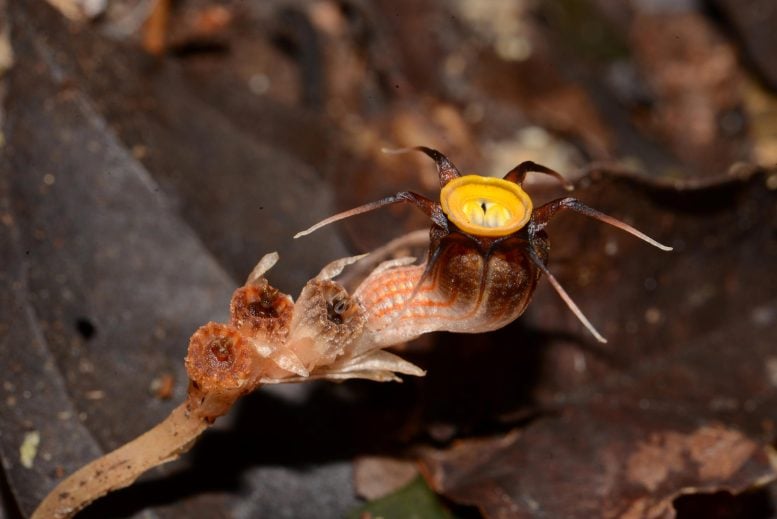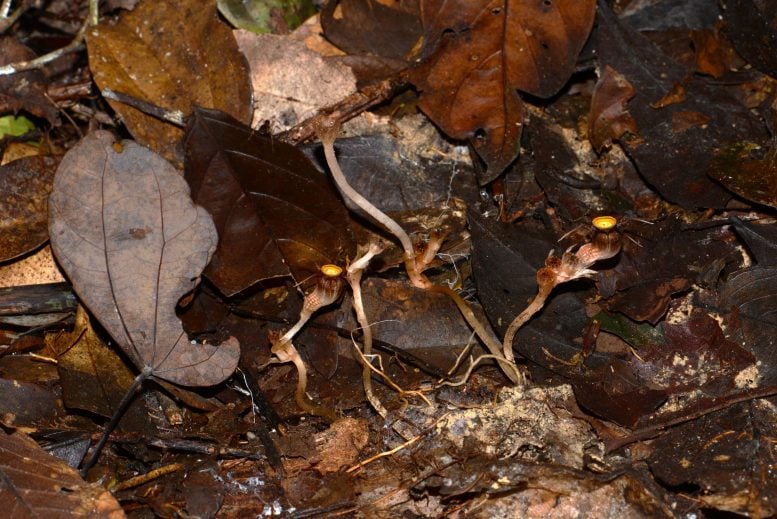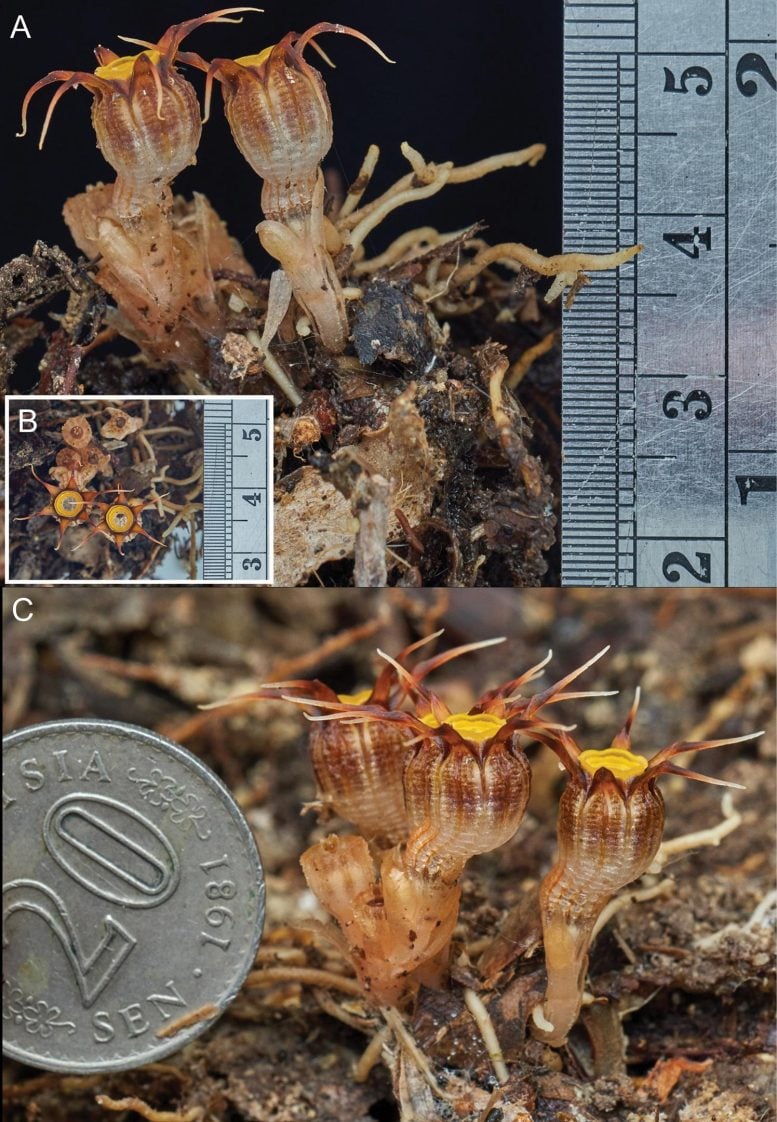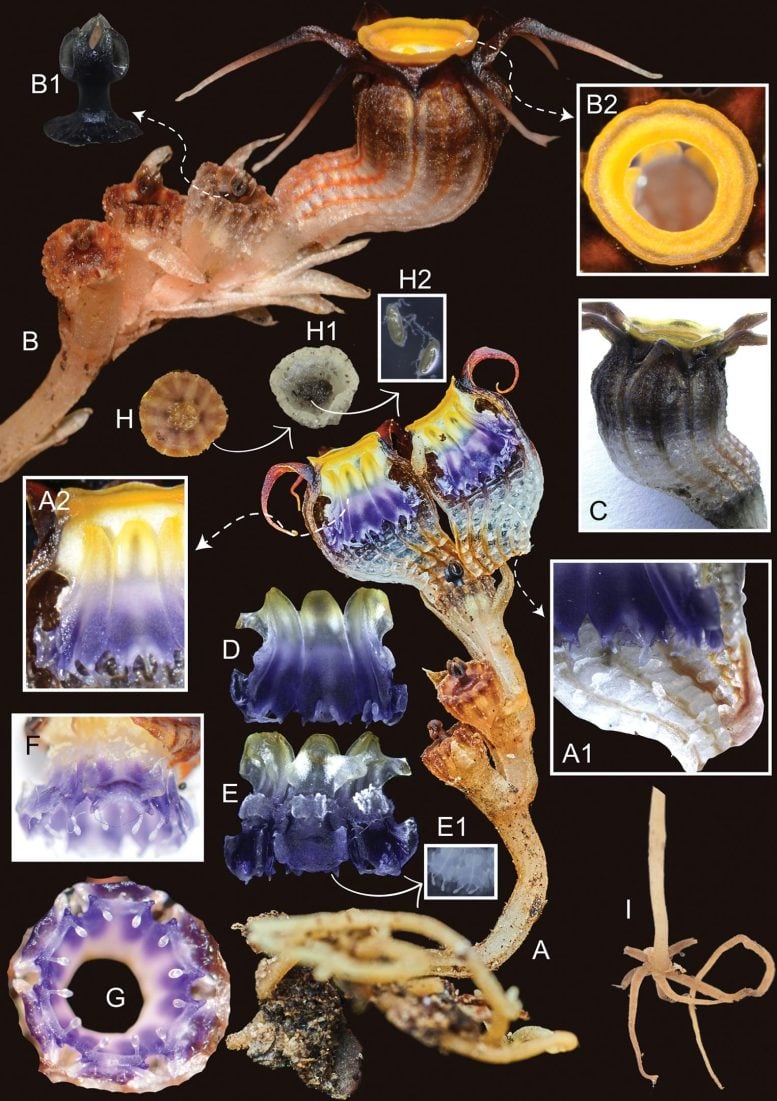
The newly discovered plant Thismia malayana in Malaysia’s rainforests parasitizes fungi to survive in shaded undergrowth. It’s small, pollinated by insects, and listed as Vulnerable, highlighting conservation needs.
Scientists have discovered an extraordinary plant that survives by stealing nutrients from underground fungi. Named Thismia malayana, this unusual plant was recently published as a new species in the open-access journal PhytoKeys by botanists from the Forest Research Institute Malaysia (FRIM) in collaboration with local naturalists and stakeholders.

Unique Survival Strategy of Thismia malayana
Thismia malayana, discovered in the tropical rainforests of Peninsular Malaysia, belongs to a group of plants known as mycoheterotrophs. Unlike most plants, mycoheterotrophs do not perform photosynthesis. Instead, they act as parasites, stealing carbon resources from the fungi on their roots. This adaptation takes advantage of mycorrhizal symbiosis, which is usually a mutually beneficial relationship between colonizing fungi and a plant’s root system.

Habitat and Pollination
By stealing nutrients from fungi, this newly discovered species thrives in the low-light conditions of dense forest understories where fungus gnats and other small insects pollinate its highly specialized flowers.

This remarkable plant is around 2 cm long and is typically found hidden in leaf litter and growing near tree roots or old rotten logs. The research team identified Thismia malayana in two locations: the lowlands of Gunung Angsi Forest Reserve in Negeri Sembilan and the hilly dipterocarp forests of Gunung Benom in the Tengku Hassanal Wildlife Reserve, Pahang.

Conservation Challenges
Despite its small size, Thismia malayana is very sensitive to environmental changes and has been classified as Vulnerable according to the IUCN Red List criteria. Its limited distribution and the potential threat from trampling due to its proximity to hiking trails underscore the importance of continued conservation efforts.
Reference: “Thismia malayana (Thismiaceae), a new mycoheterotrophic species from Peninsular Malaysia” by Mat Yunoh Siti-Munirah, Chin Hardy-Adrian, Sharipudin Mohamad-Shafiq, Zainuddin Irwan-Syah and Abd Halim Hamidi, 31 May 2024, PhytoKeys.
DOI: 10.3897/phytokeys.242.120967
Never miss a breakthrough: Join the SciTechDaily newsletter.
1 Comment
It is difficult to read light-gray type font.